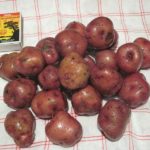By Catherine Haug, May 9, 2017 (Photo, right, by D. Morgan, used with permission)
Hey, all you huckleberry pickers out there (or those who pick other native berries such as serviceberries/June berries/saskatoons, choke cherries, etc.), this is for you. Of course, all those who have picked for their own use for years probably already know this, but those who pick for profit or are new to our area:
Don’t be greedy! Leave some berries on the bush for the bears and birds, so they can spread the seeds throughout the area to ensure the berries are there for future generations. You might think everyone knows this, but think again. (more…)



